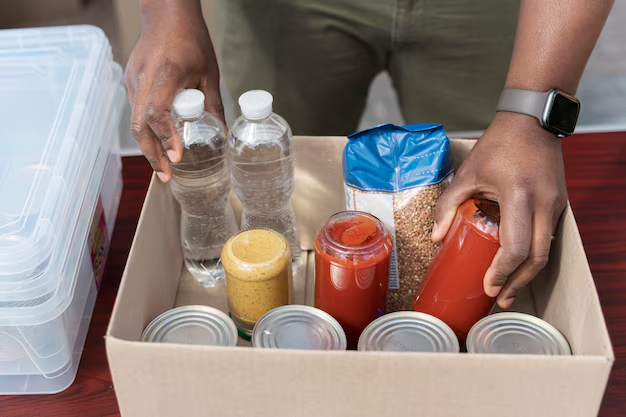Struggling to Find Your Next Meal? How to Access Food Banks with Ease
In times of financial strain, knowing that help is available can be a comforting thought. The idea of walking into a food bank might seem daunting, but rest assured, it’s a straightforward process designed to support you during tough times. Here's a simple guide to help you access food from your local food bank, along with some additional resources that might make your life a little easier.
Getting Started: Finding a Food Bank Near You
**1. Search for Local Food Banks: ** Start by searching for food banks in your community. Use terms like "food pantry near me" or "local food banks" via search engines. Alternatively, consider contacting community centers, churches, or social service organizations for referrals.
**2. Check Eligibility Requirements: ** Some food banks may have specific eligibility criteria, usually based on income level and household size. Be sure to review these requirements on their websites or by contacting them directly, as they can vary between locations.
**3. Gather Necessary Documentation: ** While not always needed, it’s a good idea to have some form of ID and proof of address. Some places may ask for proof of income, so having recent pay stubs or a benefits statement could be useful.
**4. Visit During Distribution Hours: ** Food banks typically operate on specific days and times. Make sure to check these details beforehand, as visiting at the right time will ensure you receive assistance without delay.
What to Expect at the Food Bank
A Welcoming Environment: Expect a friendly and supportive atmosphere. Staff and volunteers are trained to assist you with respect and understanding.
Variety of Food Items: Food banks usually offer a range of items from canned goods to fresh produce. The selection may change, so be open to trying new foods you receive.
Limits and Frequency: There might be limits on how often you can access services, as well as guidelines on the amount of food you can take home. These are designed to ensure fair distribution to all in need.
Maximizing Your Visit
Plan Your Meals: With the foods received, plan meals around them to stretch your supply as far as possible. This can also help avoid food waste.
Bring Bags or Boxes: Having your own bags or boxes can make transporting your groceries much easier.
Ask for Other Resources: Food bank staff often have information on other forms of support you may qualify for, such as government assistance programs.
Beyond the Food Bank: Additional Assistance Options
When food insecurity stems from broader financial issues, it's crucial to explore different forms of assistance. Consider these options:
Government Aid Programs: Look into programs like SNAP (Supplemental Nutrition Assistance Program) or WIC (Women, Infants, and Children) for longer-term food security.
Financial Assistance and Budgeting: Seek advice on budgeting and managing expenses. Many nonprofit organizations offer these services for free.
Debt Relief Options: If debt is a major concern, explore consolidation or counseling options with certified financial advisors.
Credit Solutions: If credit card debt is overwhelming, discuss options with your provider or a financial counselor.
Educational Grants: Education can be a pathway to better opportunities. Investigate grants or scholarships that may be available to you or your family.
Quick Guide to Financial and Support Resources 📝
- SNAP Benefits: Monthly financial allowances for buying nutritious food.
- WIC Assistance: Nutrition support for women and children under five.
- Local Charities: Community organizations often offer meals and additional aid.
- Free Financial Counseling: Services to help with budgeting, debt management.
- Student Aid: Pell Grants and scholarships for education and training programs.
Whether you’re navigating unexpected challenges or ongoing financial difficulties, these resources can provide a lifeline. Remember, seeking help is a brave step towards securing a more stable and prosperous future.
